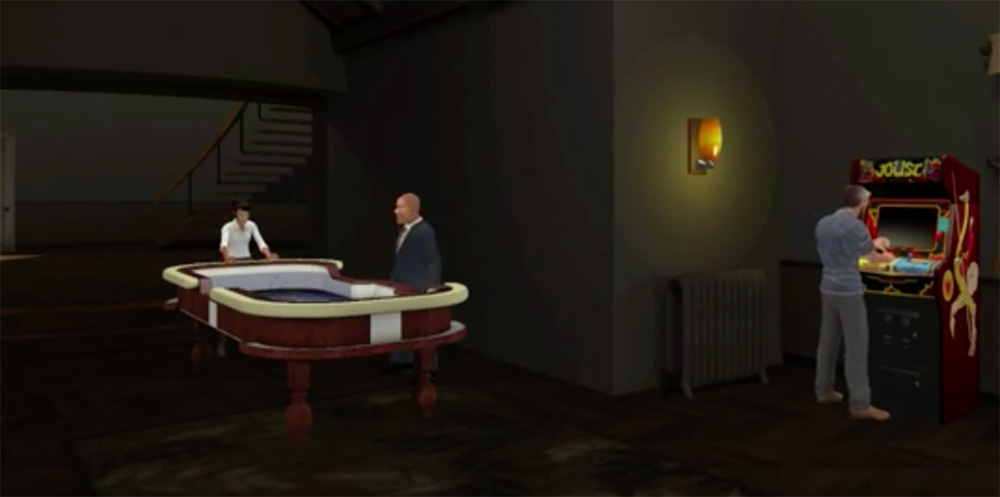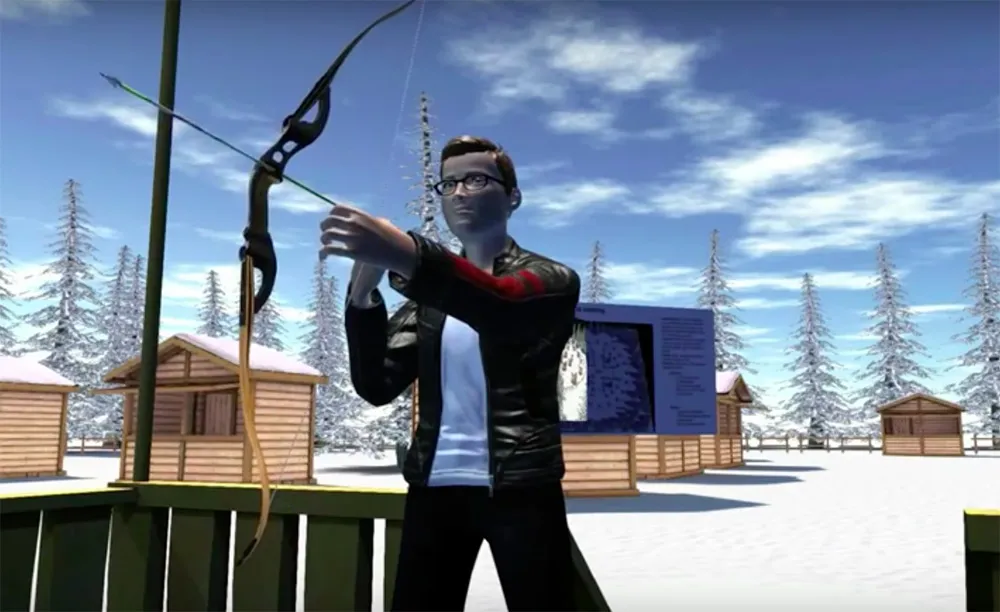Standing in the game room built within High Fidelity’s social platform, my guide shows me how to pick up items and move around the room. Target shooting was fun and archery practice was exciting, but the best part was how I knew my guide had gone outside, from the sound of his voice alone. It got quieter and distant, as it would in the real world.
Of course, stunning visuals are a must to make VR a success, but realistic sound is as much of a necessity to make presence possible. His voice changed volume and texture so quick, I accepted it as real. It worked to enhance my sense of being in that space the same way his slight head nods made me feel more comfortable as I asked questions.
Philip Rosedale, co-founder of High Fidelity and a creator of Second Life, expressed the importance of low latency in VR.
“How low latency do we have to be? It turns out, the answer to that is about a tenth of a second one way,” he said.
From High Fidelity’s home base in San Francisco, Rosedale explained how a simple nod of the head while listening to someone talk is enough to make your interactions with avatars in VR either a distraction or a familiar interaction. This is where their tenth of a second latency goal comes in handy.
High Fidelity is competing against roughly a half dozen companies to become the social network of VR. There’s Rosedale’s old company Second Life building its next iteration, called Project Sansar and AltspaceVR launched last week on Gear VR. There are also services like Convrge, VRChat and Oculus Social, a service from Facebook’s VR company.
High Fidelity is looking to launch its open beta version in time for the Vive and Rift consumer releases. It is currently available as an alpha version.
My demo of the alpha version was really fun, but buggy from time to time. Much of that would be solved with the better hand controllers from Oculus and HTC, Rosedale said. I was using Razer Hydra controllers and those things are, well, I shot myself in the face because my VR hands weren’t working right. I can’t wait to try the social platform again with some proper Oculus or Vive controllers.
Another selling point is High Fidelity’s open source platform. Rosedale explained that, like Second Life, the social platform will grow and build from the creativity of its users, who will build worlds, games and more. There is also the option to share servers with one another “ to help create more capacity for either larger spaces or larger audiences,” Rosedale said.
“You’re saying am I ready? Yeah, I’m totally ready, but it’s not going to happen overnight. Everything in High Fidelity is going to be user created. So, you’ve got to wait for people to build, share, compete … stand on each other’s shoulders, build the content, dream up new things,” he said.
High Fidelity already made some money with this process. Just like buying a web domain, users can essentially buy a named place to make it easier to share a virtual location with the rest of the community. Julianna’s Island has a nice ring, don’t ya think?
Rosedale will be speaking Thursday during the Unity event in Hollywood. We’ll bring you more details about High Fidelity and other VR social services as they become available.





























